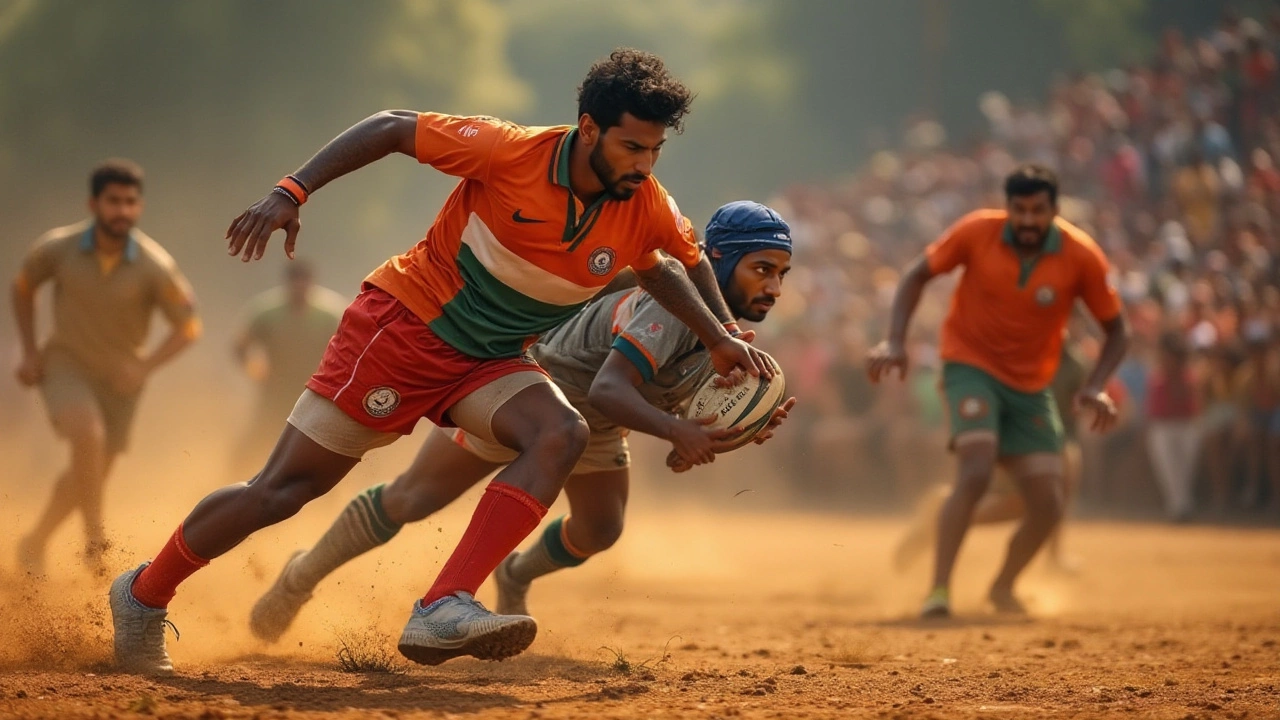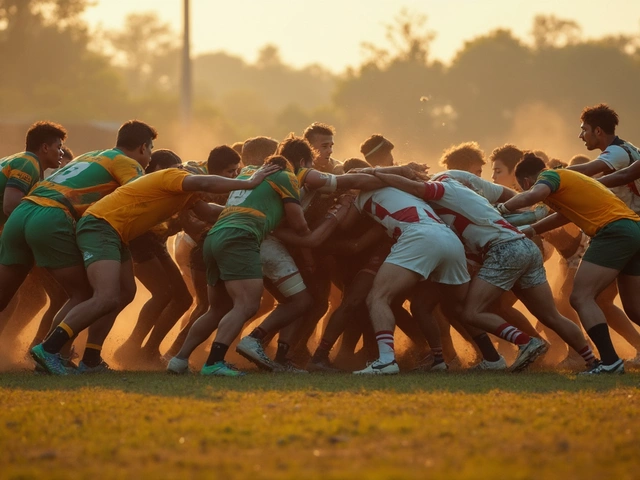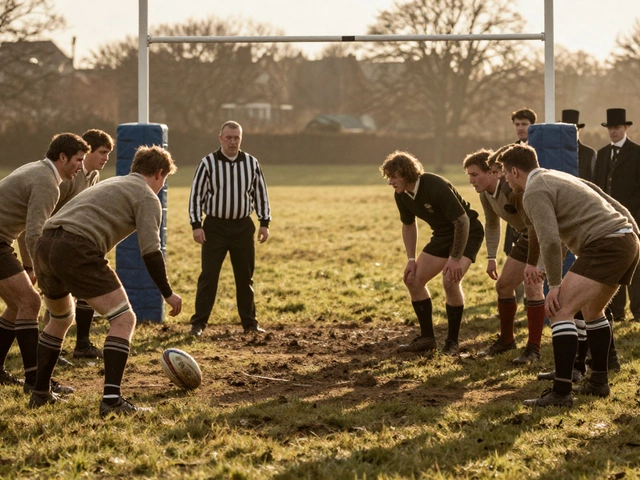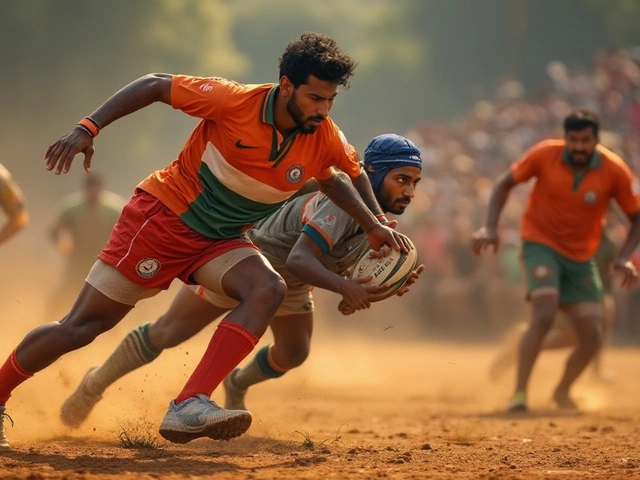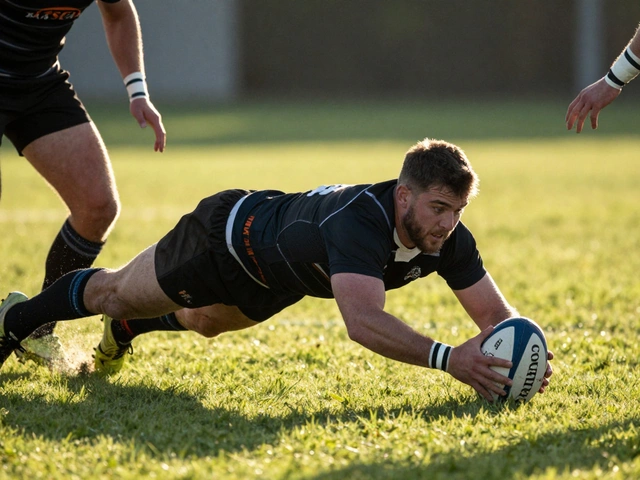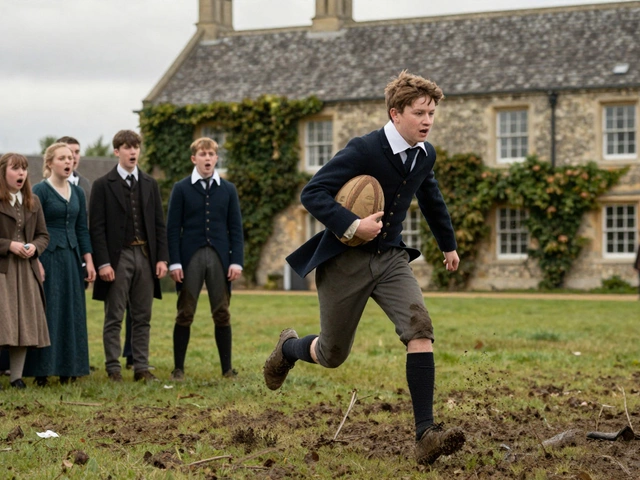The captivating world of rugby is rich in terms, positions, and tactics that weave together to create the sport's unique allure. One intriguing aspect is the role of the 'jackler.' But why is this position called a jackler, and what makes it so vital in modern matches?
In rugby, the jackler plays a pivotal role during breakdowns on the field. This player is known for their ability to swoop in and contest possession quickly, right after a tackle. But the term 'jackler' isn't just a fancy label. It represents an art of turning the tables, where the jackler snatches an opportunity from the chaos of the breakdown, often securing a game-changing advantage for their team.
Understanding the origin and evolution of this term not only reveals the depth of strategy in rugby but also highlights how players with a knack for jackling have become linchpins in their teams' tactics. As we dive deeper into the jackler's world, we uncover the skillset required, the historical greats who've mastered it, and why this position is essential in the thrilling theatre of rugby fixtures.
- Understanding the 'Jackler' Role
- Historical Origins of the 'Jackler' Term
- The Importance in Modern Gameplay
- Skills Required for Effective Jackling
- Famous Jacklers in Rugby History
Understanding the 'Jackler' Role
The role of the rugby jackler is both fascinating and indispensable on the rugby field, with the player often seen as the unsung hero whose actions can turn the tide of a game. Nestled within the rugged battleground of rugby’s breakdown play, the jackler emerges as a vital cog in the machinery of rugby tactics. This player is renowned for their agility, quick decision-making, and exceptional body positioning, which allows them to compete effectively for the ball once a tackle has been made. Traditionally, the jackler stands at the intersection of bravery and cunning, making them a formidable opponent in any fixture.
The jackler's primary responsibility is to 'jackal' the ball—a term that interestingly derives from the animal known for scavenging. The jackler, akin to its wildlife namesake, is often the first to react when a tackled player hits the ground. By planting themselves over the ball, the jackler aims to disrupt the opposition’s possession, rendering themselves a constant threat to the ball-carrier's team's plans. This process demands not only physical prowess but also mental acuity; knowing when to commit to a breakdown or when to maintain disciplinary restraint is crucial. An ill-timed contest can lead to penalties, placing the team under unnecessary pressure. "The key to efficient jackling," former All Blacks captain Richie McCaw once remarked, "is staying one step ahead in reading the game and knowing when to seize the moment."
Technical Skills and Attributes
The success of a jackler hinges on a suite of specialized skills that are both physical and intellectual. Balance and stability are integral, as the jackler must withstand counterattacks from incoming opposition players. This requires a low center of gravity and strong legs, which help in maintaining balance while opponents try to unseat or push them away. Additionally, hand strength is vital, allowing the jackler to clamp down on the ball securely despite attempts to dislodge their grip.Speed and agility also play critical roles. The faster a jackler can attack the breakdown, the greater the chance of a successful turnover. As the ball is lost during a ruck within seconds, their timing and instinctive reactions must be honed and sharp. Beyond the physical elements, the jackler must possess an exceptional understanding of the game, recognizing tactical scenarios instantaneously and responding to them effectively. By mastering this dual nature of strength and thought, the jackler can simultaneously wear down the morale of the opposition and elevate their own team’s performance.
The Strategic Importance
Strategically, the jackler embodies a defensive playmaker. Their capability to interrupt the attacking team’s flow can swiftly transition defense into an offensive onslaught. By stripping away possession, they offer their team the attack in advantageous territories, frequently resulting in scoring opportunities. The presence of a proficient jackler demands that opposing teams invest additional personnel to secure their ball at the breakdown, effectively stretching resources thinner across the field, providing the jackler’s team with tactical advantages.In terms of rugby’s evolution, the importance of the jackler has only grown. With modern games increasingly highlighting breakdown contests, players who excel in these facets have become incredibly valuable. Their ability to execute crucial turnovers isn’t just about preventing points but about psychological impact, unsettling opponents with the constant threat of losing ball possession. Such disruption at key moments can deflate the momentum of even the most formidable adversaries. Thus, understanding the depth and versatility of the jackler role not only elevates appreciation for individual contributions on the field but enhances a spectator's strategic comprehension of this beloved sport.
Historical Origins of the 'Jackler' Term
The term 'jackler' in rugby has a fascinating history steeped in the evolution of the game itself. It's derived from the foundational tactic of 'jackaling,' where the player acts swiftly and, much like its animal namesake, seeks to snatch possession of the ball amidst the chaos of the play. This term didn't arise overnight; rather, it represents the adaptive strategies that players and coaches have honed over decades as the sport has grown more complex.
In the early days of rugby, during the late 19th and early 20th centuries, the game was much more about brute strength and less about strategy. As the sport evolved, so too did the need for more nuanced play. The introduction of the stricter ruck rules around the 1960s set the stage for the jackler's emergence. Rugby teams started to realize that a swift, tactical player, often hovering on the edge of the action, could turn the tide by quickly securing the ball after a tackle.
Rugby jackler has become integral, but the term 'jackler' itself only gained popular currency in the last few decades. Its widespread use reflects rugby's global nature and the sharing of tactical philosophies across continents. This development owes much to the increasing emphasis on back-row players, particularly the openside flankers, who excel in this role. During the late 20th century, legends like Richie McCaw and George Smith popularized the concept of a dedicated ball thief within the team, becoming cornerstones of the modern breakdown strategy.
These origins have shaped not only the terminology but also the way the position is respected and understood today. The 'jackler' embodies the blend of physical prowess and mental agility that rugby demands. The role has continued to evolve alongside changes in the game’s laws, particularly those influencing the breakdown area, making it crucial for players to adapt constantly. Today’s rugby tactics often revolve around the jackler’s ability, making this position pivotal in both defensive and offensive strategies.
"The jackler isn't just a player; it's a mindset," noted rugby historian Philip Browne, "where strategic foresight meets physical execution."
This enduring legacy and continuous evolution of the jackler's role underscore its importance in rugby's past and present. Understanding the historical origins of this term offers fans and players alike a richer perspective on the intricacies of the sport. Indeed, as rugby continues to spread and evolve globally, the jackler remains a testament to the game's dynamic nature and strategic depth.
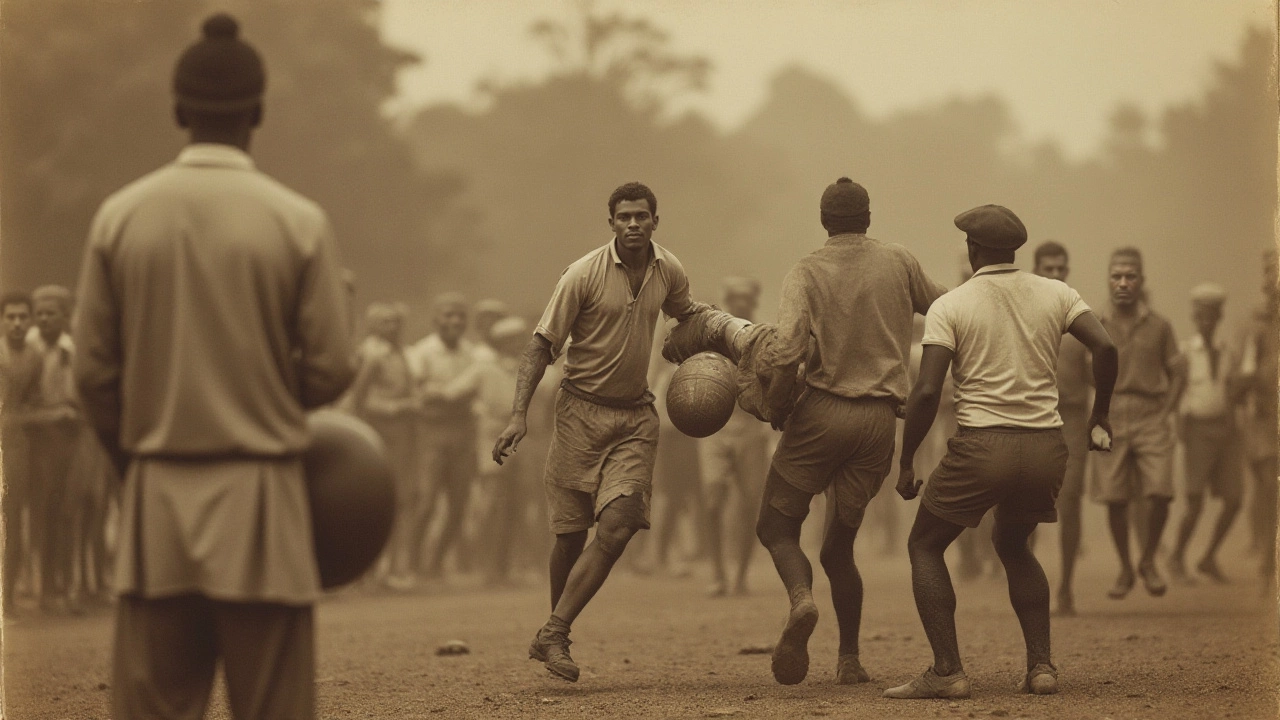
The Importance in Modern Gameplay
In the vibrant arena of modern rugby, the role of the jackler is not just an added advantage; it’s an integral part of winning strategies. Emerging from the realm of breakdowns, where the intensity and speed of matches often reach their peak, the jackler's impact is profound. The ability to quickly convert defense into attack through turnovers is nothing short of game-changing. Modern rugby matches have become a spectacle of rapid shifts and strategic maneuvers, and possessing a skilled jackler is tantamount to having a secret weapon up the coach's sleeve.
Jacklers are celebrated for their skill in disrupting opposition, a feat which demands not only physical prowess but utmost rugby intellect. As coaches strategize, having a player who can consistently jackle opens up endless possibilities to shift the game's momentum. This particular dynamic is what makes rugby so unpredictable and thrilling. A well-timed jackle can stifle an opponent's offensive flow and hand the ball back to a team, paving the way for a quick counter-attack.
Akin to chess players anticipating their opponent's next move, modern rugby jacklers must be agile and possess keen foresight. They train to be the first at the breakdown—and then, sometimes, it's not just about getting there first, but arriving at the right time when the opportunity to turnover is ripe. Jacklers thrive on the concept of seizing fleeting moments in the chaos, where a split-second decision can change the scoreline. As Richie McCaw, a legendary jackler, once illuminated,
"The breakdown is like a dance where timing is everything."
In the current landscape, where the pace of the game has increased dramatically, the jackler's job has become even more challenging. Players need athleticism to match the demands of the game, combined with the mental acuity to read the opposition's tactics. The tactical significance is so vast that often entire matches hinge on a single jackler’s effectiveness. Hence, being a successful jackler doesn't solely revolve around personal skill; it requires the system's support from teammates who can assist in setting up that perfect breakdown scenario.
Moreover, statistics reveal the vital impact of effective jacklers in match outcomes. According to a report from the 2023 Six Nations Championship, teams with players who secured more turnovers were predominantly the ones advancing to the finals. The correlation between possession gained through jackling and subsequent victories is evident from the data. Studying such trends has become crucial for teams aiming for top honors. Here’s a snapshot from the 2023 statistical findings:
| Team | Turnovers to Wins Ratio |
|---|---|
| Team A | 20:15 |
| Team B | 18:13 |
| Team C | 15:11 |
This underscores the indispensable role of jacklers in the grand scheme of rugby strategy. The ever-evolving game's dynamics only highlight the significance of the jackler as a cornerstone. Their contribution isn't just in physical contests; it symbolizes strategic intelligence, camaraderie, and a testament to skill under pressure. As the game advances, the jackler’s influence and techniques continue to evolve, promising yet more excitement on the world stage of rugby.
Skills Required for Effective Jackling
Mastering the art of jackling in rugby involves a unique set of skills that blend both mental acuity and physical prowess. At the heart of a successful jackler's capabilities is their exceptional ability to read the game. Known for their astute understanding, these players can anticipate where the ball is likeliest to be contested next. This sense of anticipation allows them to position themselves strategically, ready to contest and potentially steal the ball. Awareness on the field is more important than sheer speed, as it dictates when and where a player makes their move, often catching the opposition off guard.
Adequate agility and balance are equally important as the mental game. A proficient jackler needs to lower their body quickly to secure the ball, creating a mountain of stability that competitors find hard to shift. This demands supreme core strength and conditioning, attributes that are cultivated through rigorous training regimes focusing on fitness, core exercises, and often advanced yoga techniques. Achieving such agility ensures that when the jackler transfers their weight onto the ball, they can maintain their position even against heavy challenges.
Quick decision-making is another essential skill. In the split seconds that define the period after a tackle, knowing whether to commit to a breakdown or withdraw and reset defense is crucial. The ability to make such rapid assessments requires not only experience but also the confidence to act on instinct. As Sean Fitzpatrick, a legendary All Blacks captain, once said, "Rugby is a good occasion for keeping thirty bullies far from the center of the city." His words underscore the chaotic nature that jacklers thrive in, navigating the problem-solving scenarios they encounter nearly every time they step onto the pitch.
Physical Conditioning and Technical Skills
Since turnovers are often fought during breakdowns, knowing how to enter a ruck is crucial for a jackler. Their approach has to be not just physical but technical, employing the correct body height and foot placement to maximize leverage and stability. Practicing specific drills that simulate these high-pressure scenarios can significantly improve a player's jackling proficiency.
- Strength Training: Developing upper body strength to withstand opposition players and lower body strength for powerful positioning.
- Speed Drills: Enhancing swiftness and time of response to capitalize on fleeting opportune moments when the ball is released.
- Balance Exercises: Yoga and balance workshops to improve core stability, integral during the contest for the ball.
- Strategy Sessions: Studying gameplay patterns and learning from past matches to cultivate strategic insight.
Jacklers have to wear various hats during a match. They act as tacticians, musclemen, and strategic thinkers, sometimes all within one play. Truly, effective jackling is not merely about the strength to wrest the ball from opponents. It is just as much about understanding the intricate dance of rugby fixtures, reading subtle signs, and executing moves with timing and finesse.
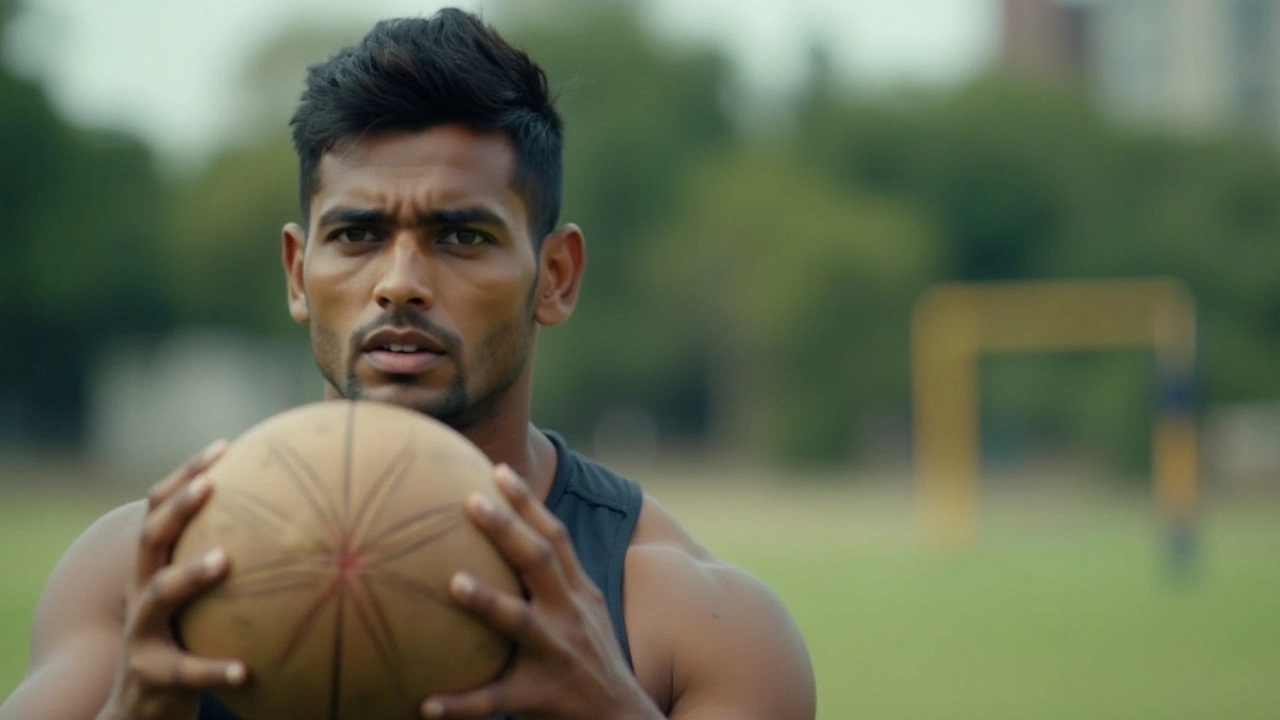
Famous Jacklers in Rugby History
In the theater of rugby, few roles stir as much excitement and admiration as the rugby jackler. Over the decades, various players have etched their names into the game’s annals through prowess at jackling, turning decisive moments in their teams' favor. Let's journey through the past and present, highlighting some of the greatest jacklers in rugby history.
One cannot discuss legendary jacklers without mentioning the iconic Richie McCaw of New Zealand. McCaw, former captain of the All Blacks, defined excellence in the breakdown during his illustrious career. His ability to anticipate and exploit the breakdown was unmatched, and he was pivotal in leading his team to multiple victories, including two Rugby World Cup titles. McCaw’s remarkable intuition and tactical prowess made him a staple in New Zealand rugby, where he donned the legendary black jersey over 140 times, a testament to his enduring skills as a jackler and a leader on the field.
Across the Tasman Sea, Australia's David Pocock is another name synonymous with exceptional jackling. Pocock's physicality, combined with his astute reading of the game, earned him a reputation as one of the toughest competitors around. His strength in contesting for possession was not just about raw power but also about positioning and an acute sense of timing. Pocock's influence in crucial tests has left an indelible mark on the Wallabies, demonstrating the profound impact a skilled jackler can have on the dynamics of the game.
More recently, England’s Tom Curry has emerged as a modern-day powerhouse in the realm of rugby positions. His relentless energy and tactical acumen during breakdowns exemplify the evolution of the jackler role. Curry's ability to adapt and apply pressure on his opponents makes him invaluable, particularly in high-stakes fixtures. As he continues to refine his craft, many see him as the torchbearer for future generations of jacklers, embodying the cunning and courage the role demands.
These players' brilliance isn't just about skill alone. Their success can be attributed to a profound understanding of the game's ebb and flow, which allows them to be at the right place at the right time. It's a fusion of mental acuity and physical prowess, which has made the role of the jackler not only vital but also a fascinating spectacle for rugby enthusiasts around the globe.
"Rugby is a game where the smallest decisions can change the entire landscape of the match. A great jackler makes those decisions count." - Nigel Owens, Renowned Rugby Referee
The art of jackling remains a key aspect of rugby strategy, with each generation bringing its own flavor and style to the position. As we cheer today's players and anticipate tomorrow's stars, we honor those who have come before, each having left an indelible trail across the rich tapestry of rugby history. The legacy of these famous jacklers continues to inspire and set standards, making the game unpredictable and ever more exhilarating.
